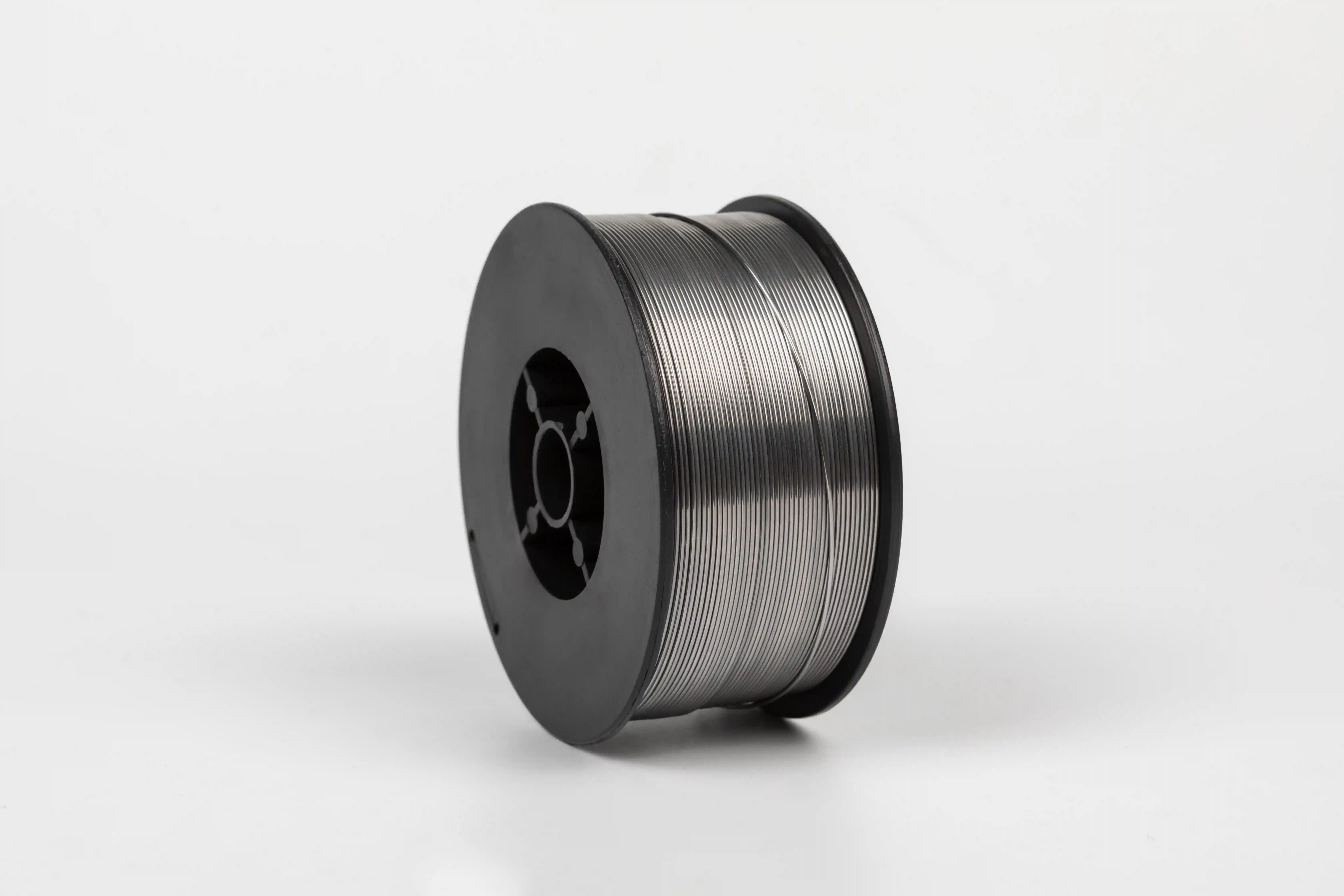Engineering Excellence: Unlocking the Full Potential of Longteng Flux-Cored Welding Wire E71T-C1A4-Ni1
2025-06-13
In the world of heavy industry and advanced fabrication, the integrity of weld joints is more than a matter of quality — it is a foundation of safety, reliability, and economic performance. As industries evolve to meet more complex structural demands, the materials they rely on must deliver exceptional performance under variable and often extreme conditions. The Longteng flux-cored welding wire E71T-C1A4-Ni1 is purpose-engineered to meet such demands. It offers a superior combination of strength, toughness, and weldability, making it a standout choice in sectors where failure is not an option — such as shipbuilding, pressure vessel manufacturing, petrochemical construction, and large-scale mechanical engineering. This article explores Longteng flux-cored welding wire E71T-C1A4-Ni1, covering its mechanical characteristics, metallurgical benefits and operational parameters. Each section underscores how this wire's carefully crafted properties translate into tangible benefits across real-world fabrication projects.

Mechanical Performance of Longteng Flux-Cored Welding Wire E71T-C1A4-Ni1
Outstanding Tensile and Yield Strength
One of the most significant mechanical advantages of the Longteng flux-cored welding wire E71T-C1A4-Ni1is its high tensile strength of 570 MPa and yield strength of 510 MPa. These values far exceed the minimum requirements for structural carbon steel welding, providing robust performance for components subjected to static and dynamic loading. This strength profile ensures that welded joints can resist elongation and failure under high loads, which is essential in structural elements such as ship hulls, offshore modules, bridge plates, and crane booms. Moreover, the high yield-to-tensile strength ratio provides a controlled safety margin — allowing the welded joint to endure transient overstress events without suffering from permanent deformation. This capability is crucial in applications where the structure may experience shock, vibration, or temporary overload conditions.
Superior Elongation and Deformation Control
Equally important is the elongation capacity of 27%, indicating excellent ductility. This attribute allows the weld to absorb energy and deform plastically under stress without cracking, which is essential in fatigue-prone environments or in applications involving temperature fluctuations and mechanical shock. For example, in pipelines or pressure vessels that undergo thermal cycling, this elongation reduces the likelihood of fracture initiation at the weld root or heat-affected zone (HAZ). Such ductility makes the Longteng flux-cored welding wire E71T-C1A4-Ni1especially advantageous for critical structures where flexibility under load is as important as strength — supporting longer service life and better stress distribution across welded assemblies.
Low-Temperature Impact Toughness of Longteng Flux-Cored Welding Wire E71T-C1A4-Ni1
Impressive Impact Energy Ratings at Sub-Zero Temperatures
A key differentiator of Longteng flux-cored welding wire E71T-C1A4-Ni1is its exceptional performance in cold climates and low-temperature operations. The weld metal exhibits impact energies of 135 J at -30°C and 120 J at -40°C — values that far exceed many standard specifications and place this wire among the top performers in its category. This means the weld remains tough and crack-resistant even under freezing conditions. In sectors such as LNG storage tank fabrication, arctic offshore installations, and cold-region shipbuilding, maintaining impact toughness is vital to prevent brittle fracture. Longteng's wire ensures operational safety, structural continuity, and compliance with international standards for low-temperature service applications.
Enhanced Crack Resistance through Microstructural Refinement
The remarkable impact toughness of this welding wire is achieved through its carefully controlled metallurgy and nickel addition. The 0.90% Ni content modifies the microstructure of the weld metal, refining the grain boundaries and promoting uniform energy absorption across the welded joint. This not only minimizes the risk of crack initiation but also delays crack propagation — providing additional time for mitigation in case of structural impact or loading. Such resilience translates into higher confidence in weld performance during heavy usage, especially when external conditions are unpredictable or where inspection intervals are prolonged.
Alloy Design and Chemical Stability of Longteng Flux-Cored Welding Wire E71T-C1A4-Ni1
Optimized Elemental Composition for Structural Welding
The chemical makeup of Longteng flux-cored welding wire E71T-C1A4-Ni1is tailored for optimized welding outcomes. With a low carbon content of 0.04%, the weld metal achieves excellent strength without excessive hardness, reducing susceptibility to cold cracking. Manganese (1.28%) and silicon (0.38%) contribute to deoxidation and arc stability while enhancing strength through solid solution hardening. The trace elements — sulfur (0.006%) and phosphorus (0.011%) — are kept at minimal levels to reduce hot cracking tendencies. At the same time, chromium, molybdenum, and vanadium are tightly controlled to avoid embrittlement or hard phase formation, especially in multipass welds. This carefully balanced composition supports high toughness, stable weld pool behavior, and excellent fusion with the base material — reducing defects and enhancing consistency even in challenging welding positions.
The Role of Nickel in Strengthening and Toughening
The 0.90% nickel content in Longteng's wire is a key contributor to its enhanced low-temperature performance. Nickel acts as an austenite stabilizer and refines the grain structure in the weld metal. It lowers the ductile-to-brittle transition temperature and promotes a smoother stress–strain response under dynamic loading. It also increases corrosion resistance, which is essential for outdoor structures, marine equipment, and chemical storage vessels. This design enables the flux-cored welding wire E71T-C1A4-Ni1 to deliver both high strength and ductility — a rare but highly desired combination in welding metallurgy.
Operational Efficiency of Longteng Flux-Cored Welding Wire E71T-C1A4-Ni1
Versatile Wire Diameter and Broad Current Range
The Longteng flux-cored welding wire E71T-C1A4-Ni1is available in three common diameters: 1.2 mm, 1.4 mm, and 1.6 mm. These options provide excellent flexibility for matching the wire to different joint configurations, groove geometries, and thicknesses. Whether welding thin structural members or thick multi-pass joints, operators can select the optimal size and current to ensure stable arc behavior and consistent deposition.
The current range supported is exceptionally wide:
1.2 mm: 120–300 A
1.4 mm: 150–400 A
1.6 mm: 180–450 A
Such adaptability helps reduce arc instability, spatter, and porosity — especially in out-of-position welds — while enabling faster travel speeds and higher deposition efficiency.
CO₂ Shielding Gas: Cost-Effective and High Penetration
The use of pure CO₂ shielding gas at a recommended flow rate of 20–25 L/min provides multiple benefits. First, it is cost-effective and widely available. Second, CO₂ promotes deeper penetration and arc force compared to argon-based mixes, making it ideal for structural joints that require full fusion. In addition, the gas helps form a well-defined slag cover that protects the molten pool, reduces oxidation, and ensures good bead appearance. This feature is especially helpful in overhead and vertical welding, where slag detachability and clean arc transitions are essential.
Smooth Arc Characteristics and Reduced Defect Rate
Longteng's wire is engineered for user-friendly performance. Its flux core formulation ensures smooth arc starts, low spatter, and excellent bead shape. The slag is easy to remove, even in multipass welds, which contributes to reduced cleanup time and increased productivity. These operational features are crucial for both automated and manual welding setups — enabling consistent results across operators and welding positions. As a result, the flux-cored welding wire E71T-C1A4-Ni1 improves worksite efficiency and reduces the rate of rework, enhancing overall project economics.
From the shipyard to the pressure plant, from subzero pipelines to dynamic load-bearing frameworks, the Longteng flux-cored welding wire E71T-C1A4-Ni1 offers a reliable and high-performance welding solution engineered for excellence. Its combination of mechanical robustness, low-temperature resilience, outstanding weldability, and cost-effective operational parameters make it one of the most versatile and trusted choices in modern industrial welding. With proven performance across diverse applications and environments, it empowers fabricators to deliver strong, safe, and long-lasting welded structures — exactly what today's industrial challenges demand.





















 Email
Email